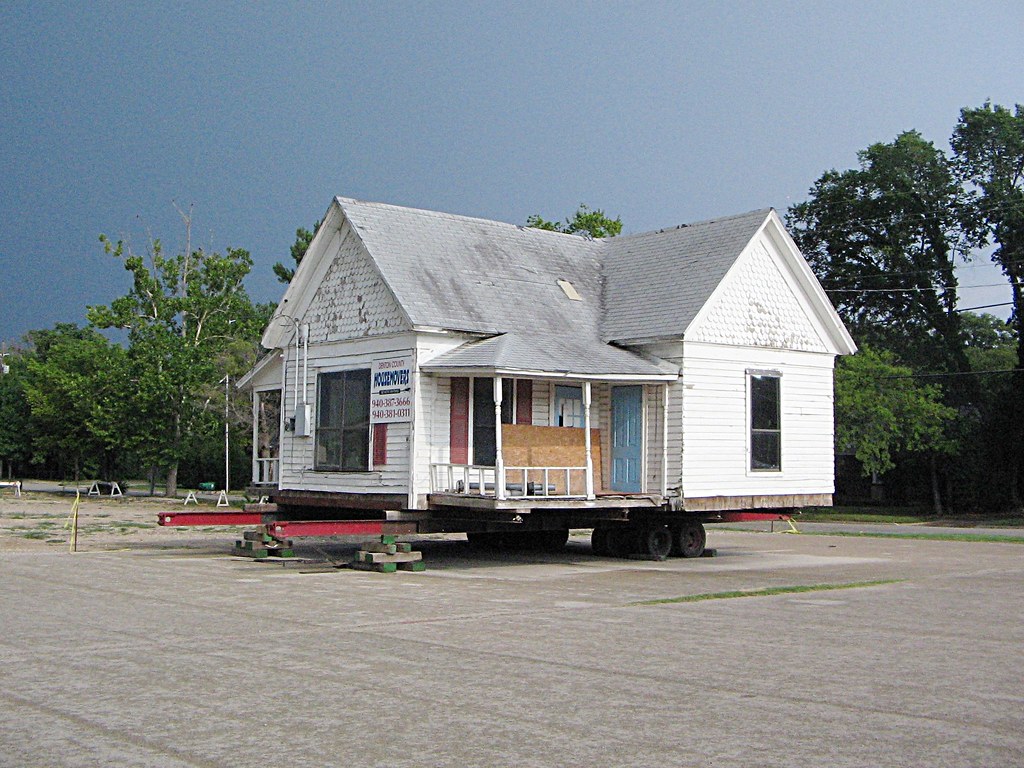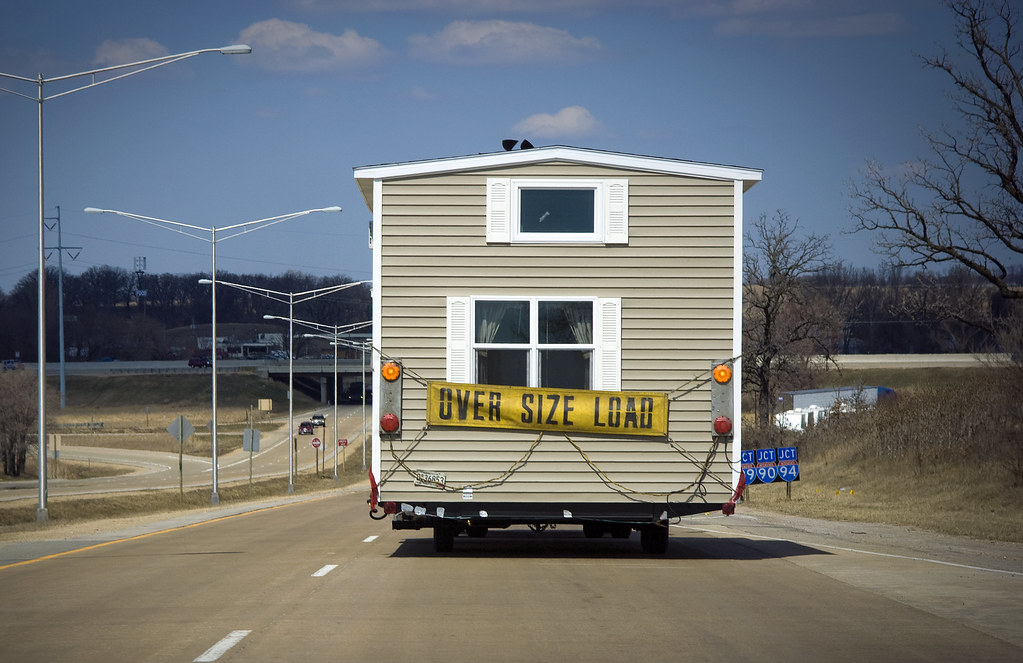Moving a mobile home is no small feat.
Despite the name, these homes are not as “mobile” as one might think.
When it comes time to relocate a mobile home, whether it’s for a new start or a business need, the process involves much more than simply hitching it to a truck.
Moving these large structures is a delicate task requiring expert planning, specialized equipment, and a thorough understanding of regulations and best practices.
This guide covers the essentials of mobile home towing, including how to prepare, what to expect during transport, and what safety and legal requirements must be followed.
Understanding Mobile Homes and Their Structure
Mobile homes, also known as manufactured homes, are factory-built structures designed for residential living. They’re typically transported in one or more sections and placed on a foundation or chassis.

In recent years, mobile home production has indeed seen a rise, driven by factors such as the high demand for affordable housing, population growth, and a shift toward flexible living solutions.
The largest mobile home manufacturing facilities are located primarily in Texas, Alabama, and Indiana, with these states leading in production output due to their established infrastructure, favorable regulations, and skilled workforce.
Built to be moveable, mobile homes are a popular choice for flexible or budget-friendly housing, offering a unique blend of affordability and convenience. However, once set up, these homes are not moved frequently, and moving them involves considerable planning and expense due to their size and structure.
Modern mobile homes are built with high safety standards to withstand environmental challenges, regulated by the U.S. Department of Housing and Urban Development (HUD). HUD’s code for mobile homes includes guidelines on fire resistance, insulation, construction, and structural integrity, ensuring a high level of safety.
Common Mobile Home Configurations
Mobile homes typically come in the following configurations, each varying in size and layout:
- Single-Wide: Narrower and compact, single-wides are ideal for smaller families or individuals, often with one or two bedrooms and an efficient floor plan.
- Double-Wide: Consisting of two sections that are joined at the site, double-wides offer more space, commonly featuring multiple bedrooms and larger living areas.
- Triple-Wide: With three sections, these are less common but are popular for those seeking even more space. Triple-wides can resemble traditional homes in layout and size.
- Park Model Homes: Though technically different, park models are often classified within the manufactured home category, offering smaller but cozy setups suited for seasonal or vacation living.
Why Moving a Mobile Home Is Difficult
Moving a mobile home is challenging primarily because of its size and weight. These homes are large, heavy, and often fragile in certain areas, making them prone to damage if not handled correctly.

The home’s structure can complicate towing. Mobile homes are designed for minimal travel and can develop structural issues if frequently moved. Ensuring the home is secure on its transport frame is essential to avoid shifting or damage during the journey.
The process often requires professional assistance and special permits, as mobile homes exceed the size limits for standard road transport. Transporting a mobile home typically involves a series of critical steps:
- Preparation and Inspection: First, the mobile home is inspected to ensure it’s road-ready. Any loose items inside the home must be secured or removed, and utilities like electricity, water, and sewer connections must be disconnected.
- Securing the Structure: The home is then securely lifted and placed onto a specialized trailer, usually a flatbed or towed on its own wheels if the structure allows. This process often involves stabilizing the structure with braces to prevent shifting during transit.
- Permits and Escort Vehicles: Obtaining the necessary permits is a crucial step, as most states require permits for oversized loads, including mobile homes. Depending on the home’s width, escort vehicles may also be required to help guide the load safely along highways.
- Transport and Setup: Finally, the home is transported to its new location. Once there, it must be carefully reattached to utilities and stabilized on its new foundation.
Not all mobile homes are alike, and the process can vary depending on the type of home.
Single-wide mobile homes, for instance, are easier to move than double-wide or triple-wide homes due to their narrower dimensions. Single-wides may be towed on their own chassis, whereas double-wides often need to be split into two sections for transport.
With double-wide mobile homes, each section must be separated and transported individually, doubling the work involved in the move. Double-wide or triple-wide homes often need multiple transport trucks, drivers, and escort vehicles, leading to increased labor and equipment costs.
Larger mobile homes also present greater challenges with height clearances, requiring careful route planning to avoid low overpasses or bridges.
Costs Involved in Mobile Home Towing
The cost of moving a mobile home can vary significantly, depending on several factors like distance, home size, permits, and necessary services along the route.
On average, moving a single-wide mobile home locally might cost between $1,000 and $5,000.
For longer distances, interstate moves, or larger homes, prices can rise substantially. Moving a double-wide mobile home, for example, can cost upwards of $10,000, while more complex, long-distance moves can exceed $20,000.
One major cost factor is the distance involved. Short-distance moves may require fewer resources, such as fewer escort vehicles or lower permit fees. However, as the distance increases, the logistics become more complicated, leading to higher fuel expenses, extra labor, and possibly even overnight accommodations for drivers.
For mobile homes, the freight class typically falls into Class 500, the highest freight class available. This high classification is due to the dimensions, complexity, and often challenging handling associated with mobile home transport.
For moves crossing multiple states, there’s also the added expense of obtaining permits for each state, with each state having its own specific requirements, route restrictions, and fees.
In addition to transportation fees, permits and regulatory fees vary by state and can add hundreds or even thousands of dollars to the overall cost. Most states require oversized load permits for mobile home moves, with fees based on factors such as the home’s width, weight, and travel distance.
Insurance Cost
Insurance should be considered as part of the moving costs. Mobile home movers typically provide some form of insurance to cover damage during transport, but if the mobile home is older or customized, additional insurance may be necessary.
This can cover unforeseen damages to the home’s structure, such as roof or siding issues caused by vibrations or wind during transport, and it provides peace of mind for homeowners.
Towing or Trailering a Mobile Home
When relocating a mobile home, the two primary options for transport are towing and trailering, each with its own benefits and best-use scenarios.
Deciding between the two largely depends on the size of the mobile home, the distance of the move, and any specific logistical or regulatory requirements.
Towing involves attaching an axle system and wheels directly to the mobile home’s frame, allowing it to be pulled as a standalone unit by a heavy-duty truck. This method is often simpler and more cost-effective, especially for short moves within the same locality or county.
Towing is ideal for single-wide mobile homes that are structurally lighter and easier to maneuver without added support. However, because the home itself is towed without additional stabilization from a trailer, it may be more exposed to road vibrations and potential damage, particularly over long distances or rough terrain.
Trailering, on the other hand, involves loading the mobile home onto a specialized flatbed trailer, which then transports the home as a secure load. This approach is generally recommended for longer moves, larger homes, or when extra protection is needed.
Double-wide and triple-wide mobile homes, which require splitting into sections, are often transported using trailers since the trailer provides stability and minimizes stress on each section’s frame.
Trailering is also beneficial for protecting the home from damage on uneven or bumpy roads and when dealing with long-distance moves that involve interstate travel, where regulations often require homes to be transported on trailers to ensure road safety.
Legal Requirements, Permits, and Multi-State Transport
Every state has its own set of regulations and permit requirements for transporting mobile homes, making it essential for movers to secure permits in each state along the route.
Permit requirements typically specify the transport route, speed limits, and time restrictions (often limited to daylight hours on weekdays to minimize traffic disruptions). Many states also require that mobile homes display special “Oversize Load” signage and attach flags or lights for visibility.
When moving across state lines, securing permits for each state ensures compliance and prevents potential delays or fines. Working with a transport company experienced in interstate moves can be beneficial, as they’ll handle the permits and ensure all legal requirements are met for each state.
Can you move a mobile home with furniture in it?
A few essential preparations can help make the move as smooth as possible. Inside the home, all personal items should be removed or secured to prevent them from shifting or breaking during transit. If the home has fixtures like ceiling fans, these should also be stabilized. Outside, any attachments like porches, decks, or sheds must be dismantled and either transported separately or reinstalled at the new location. The mobile home should be empty to reduce weight and prevent interior damage during the journey.
When to move a mobile home?
Factor to consider is the seasonal timing of the move. Winter months or severe weather conditions can delay moves due to road conditions, so planning moves for milder weather can be a wise choice.
Moving during winter months, for instance, may lead to extra expenses as transporters may need to adjust routes or reschedule due to road conditions and weather delays. Spring and summer moves are typically more predictable but can be more expensive, as these are peak moving seasons for mobile homes, meaning higher demand and possibly higher rates.
One unique aspect of mobile home transport is the requirement for road surveys. Before a move, some states require a survey of the route to identify any potential obstacles or tight spots. This process might involve planning alternate routes if there are bridges or road sections unsuitable for oversized loads.
We have thousands of fresh freight leads to help you grow your business…






